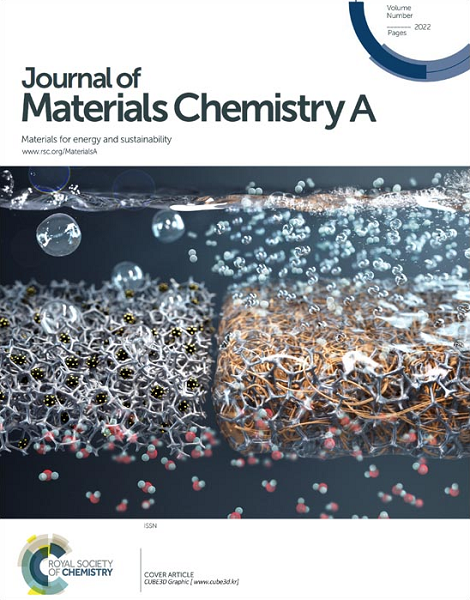High-throughput and Data-Driven Search for Stable Optoelectronic AMSe3 Materials
IF 10.7
2区 材料科学
Q1 CHEMISTRY, PHYSICAL
引用次数: 0
Abstract
The rapid advancement in optoelectronic technologies demands highly efficient, affordable, and eco-friendly materials. In this context, ternary chalcogenides show early promise as a material class due to their stability and remarkable electronic, optical, and transport properties. Extensive exploration of these materials, especially ternary selenides, can identify toxic-element-free candidates suitable for various applications. Here, we integrate first-principles-based high-throughput computations with machine learning (ML) techniques to predict the thermodynamic stability and optoelectronic properties of 920 valency-satisfied selenide compounds. Through investigating polymorphism, our study reveals the edge-sharing orthorhombic Pnma phase (NH4CdCl3-type) as the most stable structure for most ternary selenides. High-fidelity supervised ML models are trained and tested to accelerate stability and band gap predictions. These data-driven models pin down the most influential features that dominantly control key material characteristics. By emphasizing photovoltaic applications, our multistep high-throughput computations identify the ternary selenides with optimal direct band gaps, light carrier masses, and strong optical absorption edges. Among 22 candidates exhibiting high spectroscopic limited maximum efficiency, further screening - considering phase stability, toxicity, and defect tolerance - finally identifies the seven most suitable candidates for photovoltaic applications. Two of these final compounds, SrZrSe3 and SrHfSe3, have already been synthesized in single-phase form, with the latter showing an optically suitable band gap, aligning well with our findings. The ab initio molecular dynamics simulations confirm the structural integrity of these compounds under ambient conditions. The non-adiabatic molecular dynamics reveal sufficiently long photoexcited charge carrier lifetimes (on the order of nanoseconds) in some of these selected selenide materials, indicating their exciting characteristics. A similar protocol can be applied to optimize a desirable combination of optoelectronic properties. Thus, the study suggests a robust in-silico framework that can be extended to screen large datasets of various material classes to identify promising photoactive candidates.求助全文
约1分钟内获得全文
求助全文
来源期刊

Journal of Materials Chemistry A
CHEMISTRY, PHYSICAL-ENERGY & FUELS
CiteScore
19.50
自引率
5.00%
发文量
1892
审稿时长
1.5 months
期刊介绍:
The Journal of Materials Chemistry A, B & C covers a wide range of high-quality studies in the field of materials chemistry, with each section focusing on specific applications of the materials studied. Journal of Materials Chemistry A emphasizes applications in energy and sustainability, including topics such as artificial photosynthesis, batteries, and fuel cells. Journal of Materials Chemistry B focuses on applications in biology and medicine, while Journal of Materials Chemistry C covers applications in optical, magnetic, and electronic devices. Example topic areas within the scope of Journal of Materials Chemistry A include catalysis, green/sustainable materials, sensors, and water treatment, among others.
 求助内容:
求助内容: 应助结果提醒方式:
应助结果提醒方式:


